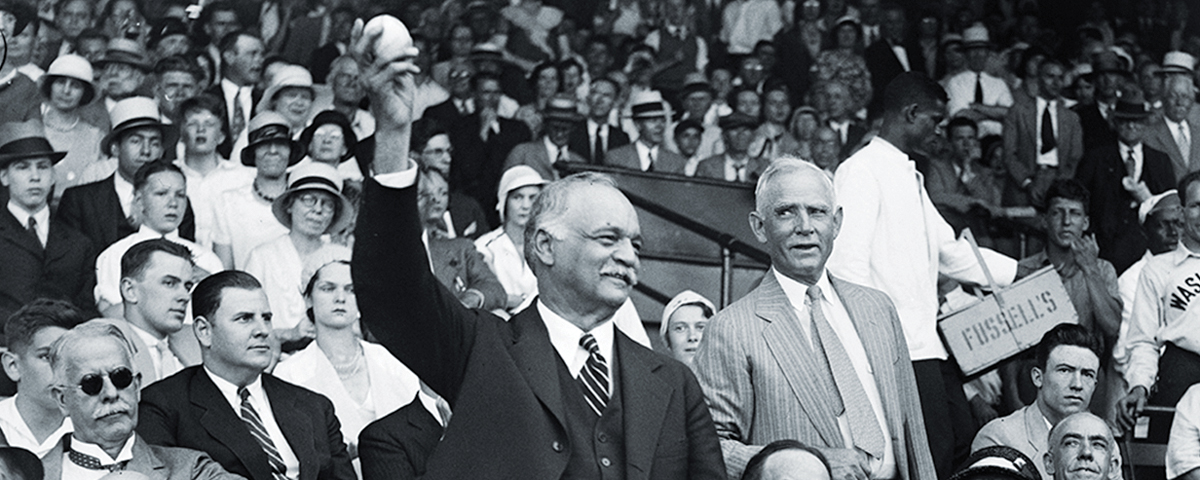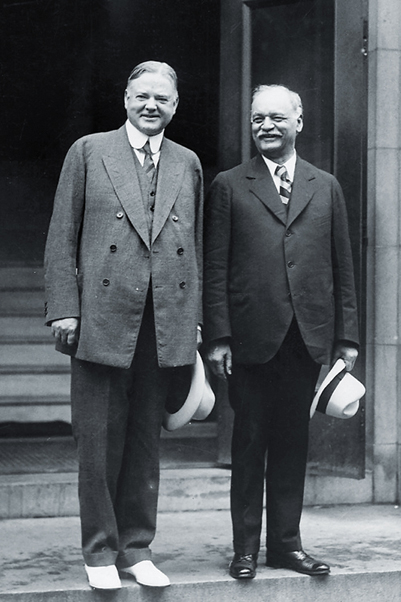
By year’s end 1863 3-year-old Charley Curtis was effectively an orphan. His French-Indian mother, Ellen (née Pappan) Curtis, died in April, leaving Charley and baby sister Elizabeth ostensibly in their father’s care in war-weary Kansas. Orren Arms Curtis was descended from Pilgrim stock, though in his case their puritanical ways had skipped a generation. The widower and his wards lived on the north banks of the Kansas (or Kaw) River in Topeka. But Orren wouldn’t remain at home long. On August 21 Confederate guerrilla Captain William Clarke Quantrill and some 400 of his Missouri border raiders sacked and burned Unionist Lawrence, Kansas, murdering more than 150 townsmen and boys. When Kansas Jayhawker Colonel Charles “Doc” Jennison recruited men to respond in kind, newly remarried Orren enlisted. Charley never lived with his father again.
Young Charley was born in Topeka on Jan. 25, 1860, the year before Kansas became a state. His mother had been educated in a St. Louis convent, and she had her son baptized at the Catholic mission at St. Marys, Kan. The first words he spoke were in Kansa and French, not English. After his mother died and his father rode off to war, Charley and sister Elizabeth stayed with his paternal grandparents, William and Permelia (née Hubbard) Curtis, in North Topeka. William had come to Kansas Territory in 1859 and gradually acquired a large tract of land. In time he gifted it to his 14 sons and daughters. It was Permelia, though, who reportedly ruled the family with a strong but gentle hand.
Charley’s maternal grandparents, Louis and Julie (née Gonville) Pappan, resided nearby. Julie—of French, Kaw and Osage ancestry—was among the grantees of the “half-breed” lands (stretching from Topeka almost to Lecompton) outlined in an 1825 treaty between the U.S. government and Kaw tribe. In 1866 she and her French-Canadian and Potawatomi husband left Topeka to claim their allotment and join relatives in Council Grove on the Kaw Indian Reservation. They brought 6-year-old Charley with them. The Pappans and Curtises were related to virtually every living soul in North Topeka, and more than anyone else Charley’s grandmothers shaped his life. One was Methodist Episcopal, the other Catholic; one was white, the other mixed blood; one a staunch Republican, the other ineligible to vote. For a brief time these diverse cultures coexisted, even complemented one another. But it could not last.
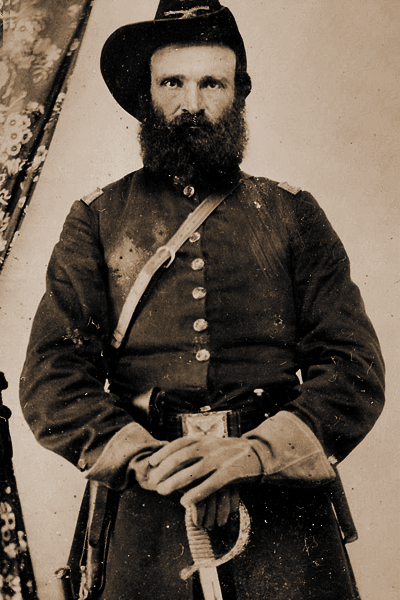
Orren Curtis remained absent from son Charley’s life. At war’s end “Captain Jack,” as the elder Curtis was known, faced a court-martial for having hanged three prisoners in his charge. Though convicted, dishonorably discharged and sentenced to a year of hard labor in the Missouri State Penitentiary for “executing” the bushwhackers, he received a pardon after only a month behind bars. Orren had remarried on Christmas Day 1864, less than a week after divorcing his third wife. But on his release from prison he did not take responsibility for his son.
Charley was just 8 on June 3, 1868, when 100 mounted Cheyenne warriors rode down on the reservation of their old enemy at Council Grove. While Kaw men painted their faces and rose to the occasion, the children took shelter in the Quaker school. Charley, however, was tapped to accompany Kaw interpreter Joe Jim on horseback the 60 miles to Topeka to seek help from the governor. In a 1927 newspaper interview Curtis—who by then was a U.S. senator from Kansas and would soon be elected the 31st vice president of the United States—left out the fact Joe Jim had been at the reins. Indeed, in his retelling he’d trudged the 60 miles afoot in just 20 hours:
Though only 8 years old at the time, I was selected to make the trip. One reason was that I spoke the language of the white man. I could deliver my message. Another was that I had traveled back and forth to Topeka many times, visiting my father’s relatives.…
This trip was my first turn toward the United States Senate. It had to do with starting me into the life of the white man instead of that of the Indian. But for the raid of the Cheyennes I might have drowsed my life away there as a member of a tribe that was a charge of the government.
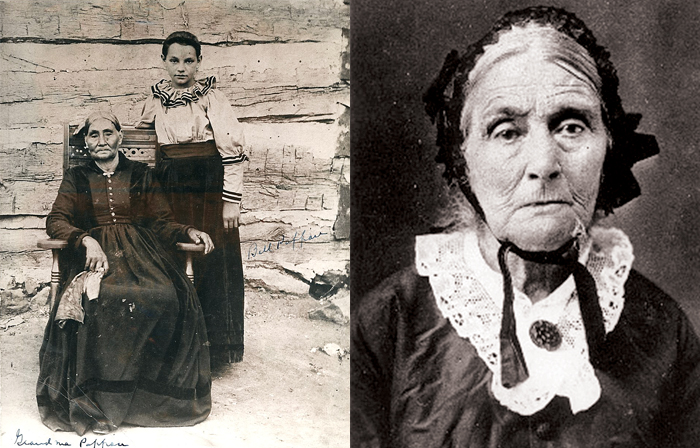
Through the 1850s white settlers and travelers on the Santa Fe Trail had steadily encroached on the 20-square-mile Kaw Agency. It got so bad, the Kaws found it nearly impossible to plant a crop of corn. If not for the hostile Cheyennes and Pawnees, the beleaguered Kaws might have packed up and moved farther west. They appealed to the U.S. government, but the Indian agents were at best ineffectual in evicting the squatters and at worst complicit with the white interlopers. In the May 22, 1858, Kansas Herald of Freedom Dr. C.H. Gran, a visiting physician from Illinois, shared a detailed, albeit prejudiced, description of life on the Kaw reservation:
Their village contains about 18 or 20 lodges, built in the following style: from 6 to 8 feet long; green, limber saplings are stuck into the ground; canvas of various colors, hides, buffalo robes, etc., are tied around the same; and, drawing them tighter toward the top, they bring the saplings together, leaving room, however, for the smoke—or, at least, for some—to escape. Such is their house. Stepping inside we were greeted with a shouting sound, like “How, how?” The lords and masters we found smoking and card playing, old and young. The squaws (ladies) were making or ornamenting leggins [sic] or moccasins. Some, old and young, sat round their center fires, tailor fashion, talking away lustily—very likely about their white intruders and their pale, sickly appearance. Some of them had quite a number of buffalo robes, prepared and unprepared, which they were selling.…They do not appear to like the life of a farmer, mechanic, etc., very much, and I hesitate not in asserting that, whenever they die, it is, in nine cases of 10, not in consequence of having overworked themselves.
In the 1860s the Kaws remained under pressure from encroaching white settlements to the east and hostile tribes to the west. But life was still mostly good, at least for a boy like Charley. In countless interviews during his political career Curtis fondly recalled his childhood on the reservation. His descriptions were largely idyllic—days spent fishing or horseback riding, the companionship of other children, the presence of his loving grandmother. He recalled how he and other Kaw boys used bows and arrows to shoot at coins white visitors would slip into split sticks—the coins themselves their reward for hitting the target. Perhaps he was looking through rose-colored glasses or the fog of memory, for reservation life was not ideal. Impoverished Kaws often begged from white neighbors and on occasion stole a chicken. To feed their families in past decades, the Kaws would venture onto the Plains for a summer bison hunt, but fear of their enemies kept them home.
The summer of 1867 was a volatile one on the Plains, as Maj. Gen. Winfield Scott Hancock put on a show of force intended to subdue those recalcitrant Indians standing in the way of progress. “Hancock’s War,” however, was a failure that only served to inflame hostile tribes, especially the Cheyennes, whose camp on Pawnee Creek the general razed that April, touching off hostilities. On the heels of a Cheyenne raid on Fort Wallace in late June, Cheyennes and Lakotas massacred a 12-man patrol under Lieutenant Lyman Kidder in northwestern Kansas. With the signing of the Medicine Lodge Treaty that October, the Kaws hoped their old enemies would be placated. At the very least, they figured, it would again be safe to hunt.
They figured wrong. The next month Cheyennes interrupted the Kaws’ bison hunt in central Kansas, and a battle ensued. The Kaws got the best of their enemy but thought it best to march the 100 miles east to the relative safety of the reservation. They had little meat to take home. Scores died from exposure and starvation en route. Arriving at Fort Riley, the survivors performed tribal dances for white audiences to earn cash for food.
“These Kanza [Kaw] dead have no grave markers,” wrote Ron Parks, former administrator of the Kaw Mission State Historic Site. “Their lives were as evanescent as wind-driven cloud shadows drifting across the plains. We know they were disproportionately young and female, but we don’t know their names. They are historical nonentities. During a few cold days in December 1867 they became too weak to go farther, dropped to the ground, then died—61 of them—on the Kansas prairie.”
The dead were Charley’s cousins, uncles, aunts, playmates. Despite the tragedy, the surviving Kaws held a scalp dance to celebrate their victory over the Cheyennes. Charley no doubt witnessed it, though he never publicly discussed the death march or its aftermath.
‘I remember well the thrilling spectacle of Indians on the warpath and attacking,’ Curtis recalled, ‘mounted, of course, bedecked with feathers, their faces smeared with war paint’
He did regale reporters with his memories of a more notable event the following summer—the June 3, 1868, Cheyenne raid on Council Grove:
It was a glowing summer afternoon, and the reservation lay sleeping in the sun.…Suddenly the quietude of those vast open spaces was sharply broken. The rattle of many rifles brought the drowsing Kaws to their feet. I remember well the thrilling spectacle of Indians on the warpath and attacking…mounted, of course, bedecked with feathers, their faces smeared with war paint. They galloped in circles about our camp, firing steadily into it as they went.
Before the attack the well-armed main body of 400 Cheyennes and Arapahos, led by Tall Bull and Little Robe, had parleyed with a white delegation from Council Grove, assuring the hamlet’s safety as long as the townsmen didn’t intervene. Some white settlers may have even welcomed the attack, as it might accelerate the Kaw removal. “Our settlers had no objections to Indians exterminating each other,” a resident later recalled.
Parks wrote that up to 100 resolute Kaws painted themselves for battle as Joe Jim and young Charley galloped off to Topeka for help. They needn’t have bothered. Despite the thousands of shots fired in the all-Indian engagement, only one warrior was wounded on each side. By the time help did arrive, the attackers had abandoned the fight and returned to the high Plains. From a military standpoint historians agree the 1868 raid on Council Grove had little significance. The ripple effect, though, was tremendous.
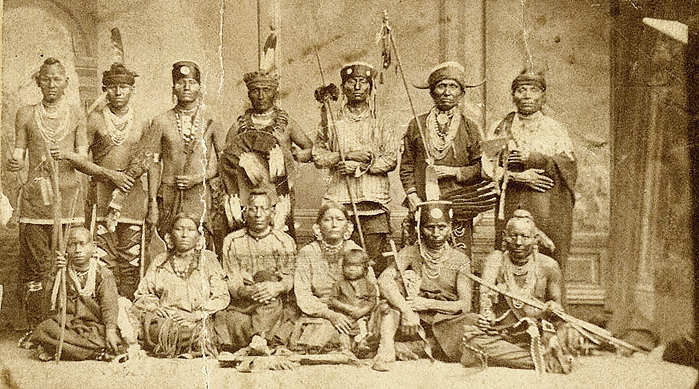
Settlers in eastern Kansas, believing themselves immune to the attacks and depredations occurring in the western reaches of the state, were terrified. Governor Samuel J. Crawford—an active brevet brigadier general when first elected governor in 1864—was infuriated, considering it a personal insult hostile tribes would venture so far east. After all, Council Grove was only 60 miles from the capital of Topeka. Patrols increased, and authorities withheld promised arms and ammunition from the Cheyennes and Arapahos. Though Thomas Murphy, superintendent of Indian Affairs in Atchison, ultimately acceded to Indian demands for weapons, the impatient Cheyenne Dog Soldiers by then had ridden off to attack settlements along the Saline and Solomon rivers. Their actions in turn incensed Maj. Gen. Phil Sheridan, commander of the overseeing military Department of the Missouri. He began planning a winter campaign that would culminate in Lt. Col. George Armstrong Custer’s attack at the Washita in Indian Territory (present-day Oklahoma). The 19th Kansas Volunteer Cavalry—authorized by Governor Crawford, who then resigned to personally lead the regiment—assembled on the outskirts of Topeka for abbreviated training before taking the field. Among the recruits was Charley’s father, Captain Jack Curtis, who served as quartermaster sergeant, and among the scouts were a half-dozen Kaws, eager to exact vengeance on their old enemies.
The Plains Indian war had escalated, and the little mixed-blood boy who had witnessed and even participated in it to a small degree, soon reached the understandable conclusion it was not safe to be an Indian in Kansas. Grandmother Julie Pappan told him as much, and in the wake of the 1868 raid she sent Charley packing to grandmother Permelia Curtis. Whether the Methodist matriarch had put her foot down or the grandmothers had reached a mutual decision is not known. Regardless, Charley began attending a white school in Topeka. Teased whenever he spoke Kansa and French, he soon forgot those languages.
In June 1872 Interior Secretary Columbus Delano came to Council Grove to obtain the necessary signatures to implement a pending Kaw removal bill. As recorded by the tribe’s interpreter, Chief Allegawaho addressed the assemblage:
Bechego [the Kansa name for the U.S. president], we hear what you have to say about our removal to a new country farther south. Only a few years ago our home was on the river farther north, but we were driven from it and settled here, where we were promised we might remain as long as the grass grows and the water flows. Now you come asking us to give up this land where our homes are established, where our loved ones are buried; ask us to leave all that we hold sacred and move to a new and a strange country. Bechego, you treat my people like a flock of wild turkeys. We settle down on one stream, you come and scare us up, we fly over and alight on another stream; again you come and scare us over to another stream, and I fancy you will soon drive my people into the ocean beyond the [mountains].
No amount of eloquence, however, could stop their planned removal to Indian Territory. A year later many of the Kaws journeyed north to bid farewell to their cousins the Potawatomies. On learning the Kaws were encamped outside Topeka, Charley went out to visit. Having learned to ride ponies bareback, the light, wiry 13-year-old was earning his keep as a full-fledged jockey. But his grandfather William Curtis had died only months earlier, and Charley felt lost:
‘This was the great crisis in my life,’ Curtis recalled in later life. ‘By the action I then took, I would be either white man or Indian for life’
Being adrift, I threw my lot with them.…We traveled for one day’s journey out of Topeka and made camp. The evening meal was eaten. Our Indian pallets were made on the ground. The camp had fallen asleep. It was then that Julie Pappan came to my bed. She awakened me. She told me of the love she felt for me, the son of her lost daughter, of the joy of having me back with the tribe. She said that she loved me above all else in this world. But she wanted me to leave the Indians. She wanted me to go back to the white men. This was the great crisis in my life. By the action I then took, I would be either white man or Indian for life. The world belonged to the white man. She, Indian woman, knew that. She, against the urge of her heart, wanted me to return to my father’s people.…
If I have been of service, the thanks is due to Julie Pappan, Indian woman of the Kaw tribe.
“Indian Charley” became a sensation in the state capital. While attending school, he doubled as a hack driver, often carrying lawyers and legislators about their business. He began reading the law, passed the bar at age 21 and three years later was elected Shawnee County attorney. Though he ran on a platform vowing to enforce prohibition, in all likelihood swayed voters believed that any son of Captain Jack Curtis, the saloons’ most loyal customer, would never follow through on that promise. Yet as Charley set about shutting down saloons, it was his father, who had since become a county deputy, who often testified to the illegal liquor sales. The young county attorney capped off his banner year of 1884 by marrying Annie Elizabeth Baird, daughter of a prominent Topeka businessman. The couple went on to raise three children, the first named Permelia, after Charley’s indomitable paternal grandmother.
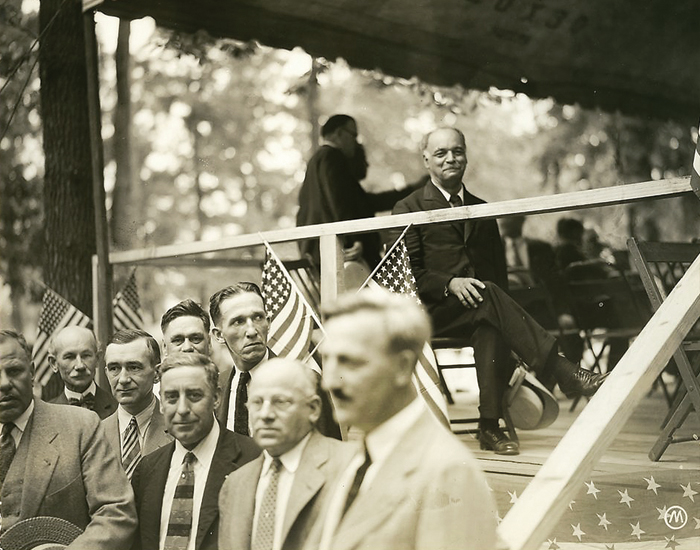
As his political star rose, Charley morphed from “Indian Charley” to “Our Charley.” Elected the first Republican Senate majority leader in 1925, he was considered by some the most powerful man in the nation. Three years later, at age 68, he was elected the first American Indian vice president, serving from 1929 to 1933 under President Herbert Hoover, though he was not a “Hoover man” per se. Charley ever credited his grandmothers—one Indian, the other white—with his rise from a tepee to the U.S. Capitol.
In 1898 Charley drafted and introduced the bill that would become the Curtis Act, though he later condemned it in its final form. The bill that extended the Dawes Act to the Five Civilized Tribes (Cherokee, Chickasaw, Choctaw, Creek and Seminole) was the final blow to the sovereignty of the Indian nations. By abolishing tribal courts and subjecting all persons in Indian Territory to federal law, the Curtis Act dissolved tribal governments. While its namesake was displeased with the outcome, it would not be accurate to say he opposed assimilation. Charley Curtis, who died in Washington, D.C., on Feb. 8, 1936, at age 76, once told a reporter that American Indians would eventually disappear, wholly absorbed into the white race. Judging from his life experience, it seemed the only way Indians could survive in the modern world. WW
Kansan Deb Goodrich is the Garvey Historian in Residence at the Fort Wallace Museum. She’s writing a book and a screenplay about Charley Curtis. For further reading Goodrich recommends The Darkest Period: The Kanza Indians and Their Last Homeland, 1846–1873, by Ronald D. Parks.

